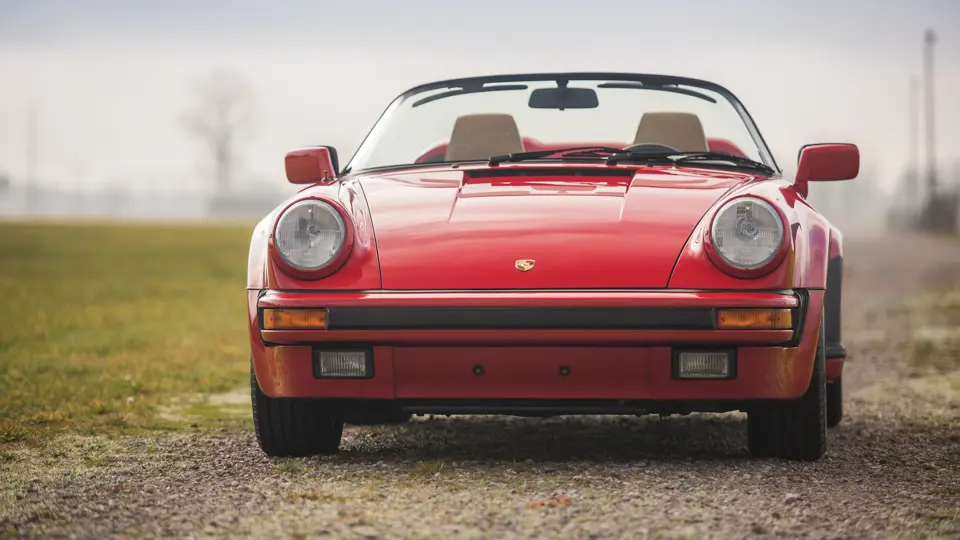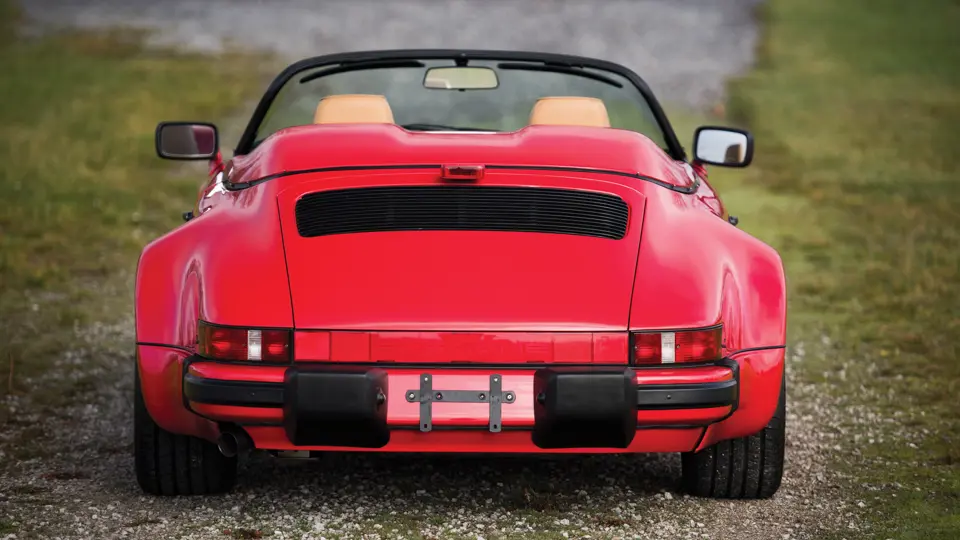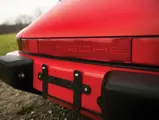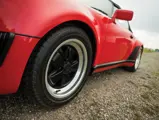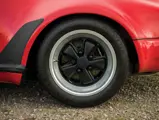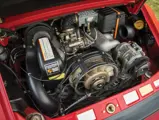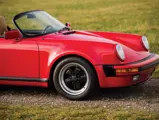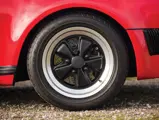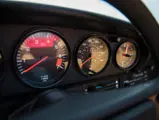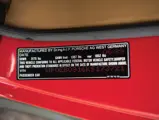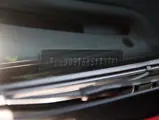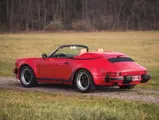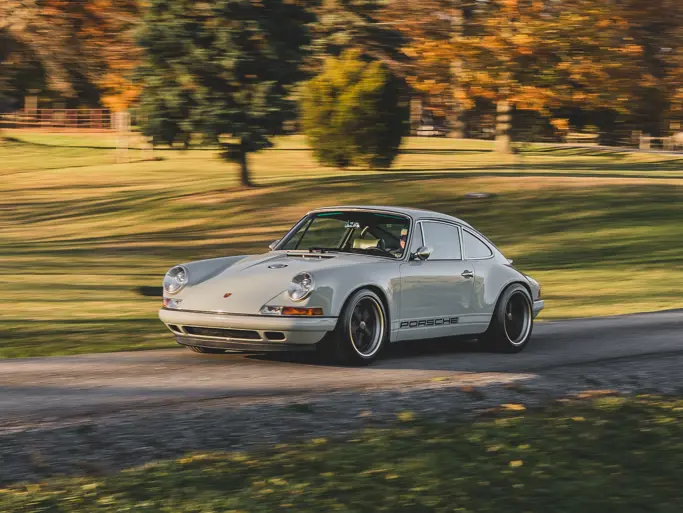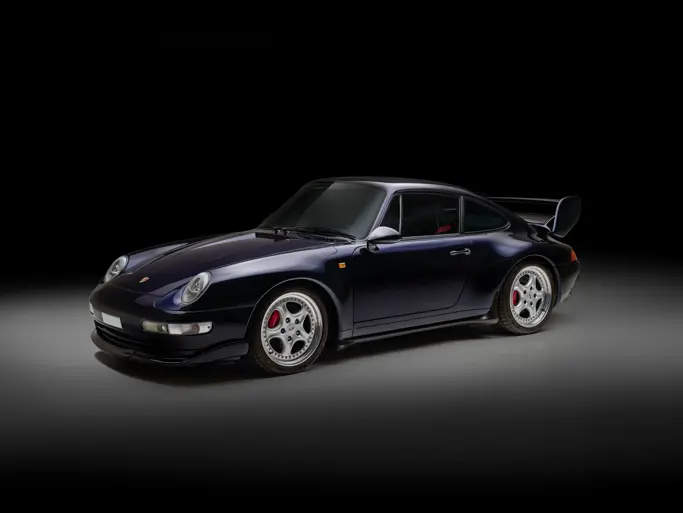217 bhp, 3,165 cc SOHC air-cooled horizontally opposed six-cylinder engine with Bosch electronic fuel injection, five-speed G50 manual transmission, independent front suspension with MacPherson struts, lower A-arms, torsion bars, and an anti-roll bar; independent rear suspension with semi-trailing arms, transverse torsion bars, tubular shock absorbers, and an anti-roll bar; and four-wheel hydraulic disc brakes. Wheelbase: 89.4 in.
The popularity of the original and Spartan 356 Speedster of the early 1950s was the impetus for reviving the model name in 1983. Several thousand, based on the 911 SC platform, were built at the direction of Porsche CEO Peter Schutz, and the project was supervised by Technical Director Helmuth Bott. Porsche stylist Tony Lapine took what was essentially a 911 cabriolet and removed its windshield, folding top assembly, and rear seats. The front glass was replaced with a steeply raked, lower-profile removable windshield and frame that mimicked that of the original 356 Speedster.
Creating a new two-seater, the area behind the driver and passenger seats became carpeted storage beneath a hinged fiberglass tonneau. A minimalist fabric top glibly described as being for “Emergency use” replaced the electric top of the cabriolet. Although the Speedster could be ordered in either “narrow-body” or “Turbo-look” form, nearly all of those exported to the United States were wide-bodied, with the requisite wider Fuchs forged-alloy wheels and larger tires.
Schutz had envisioned the new Speedster as being suitable for club racing in the United States, but most came very well equipped with such items as air-conditioning, electric seats, leather upholstery, plush carpeting, and stereos. Because of their limited availability, most were quickly snapped up by speculators or vanished into the collections of Porsche enthusiasts. That prompted Porsche to revive the Speedster again for the 1989 model year as a stop-gap when the new Type 964 Carrera was delayed in coming to market. Lapine freshened the earlier design, using modernized mechanical components on a cabriolet chassis.
As with the earlier SC-based version, Lapine produced an attractive two-seat convertible in both narrow and wide-fendered, “Turbo-look” body styles. Some 2,060 examples of the cabriolet with the M503 Speedster option package were built between January and September of 1989, and of that number, only 800 or so went to U.S. customers. The drivetrain was standard 964 Carrera 2, with a 3.2-liter, 217-horsepower engine and the new and greatly improved G50 five-speed manual transmission. Porsche’s always-excellent power-assisted disc brakes added to its drivability. Again, many went into private collections.
This lovely 1989 Speedster, with barely 8,000 miles on its odometer, has been part of one such collection for several years. Finished in always-popular Guards Red with a cashmere interior in “Ruffled” leather, it is fitted with a Blaupunkt Reno stereo entertainment system, air- conditioning, electrically adjustable driver and passenger seats, a shortened shift lever, an alarm system, and cruise control. The well-cared-for Speedster retains its original tool kit and collapsible spare tire and wheel.
Speedsters always turn heads when they appear in public; this excellent example would be a very attractive addition to any Porsche collection.

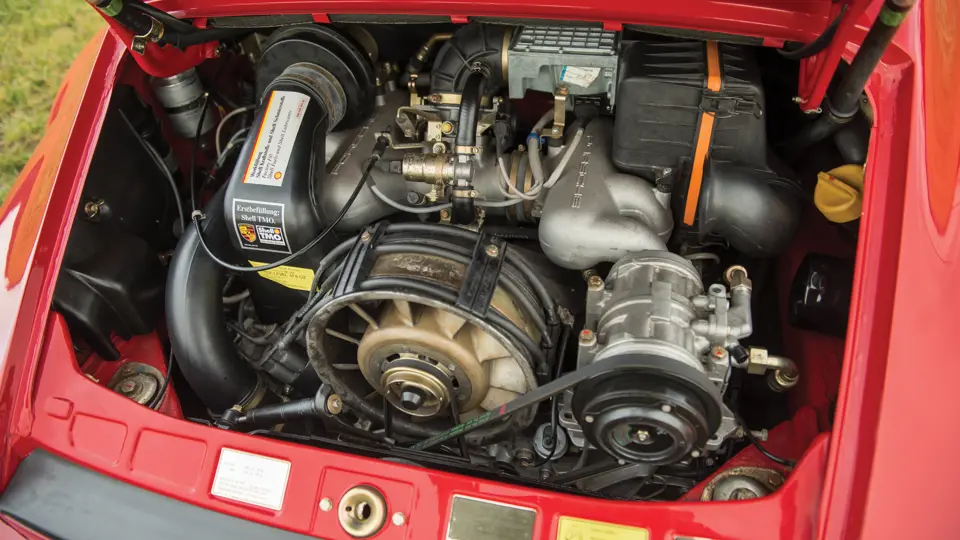
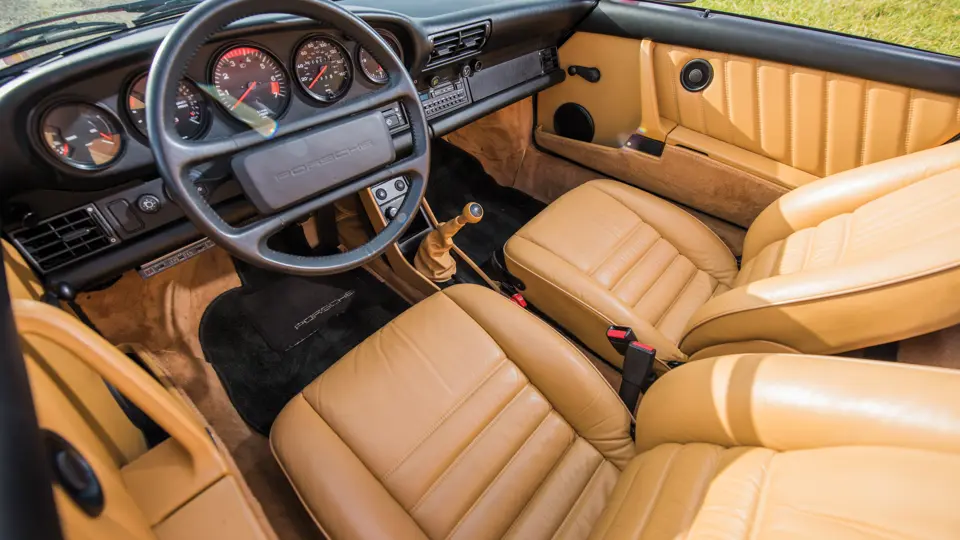

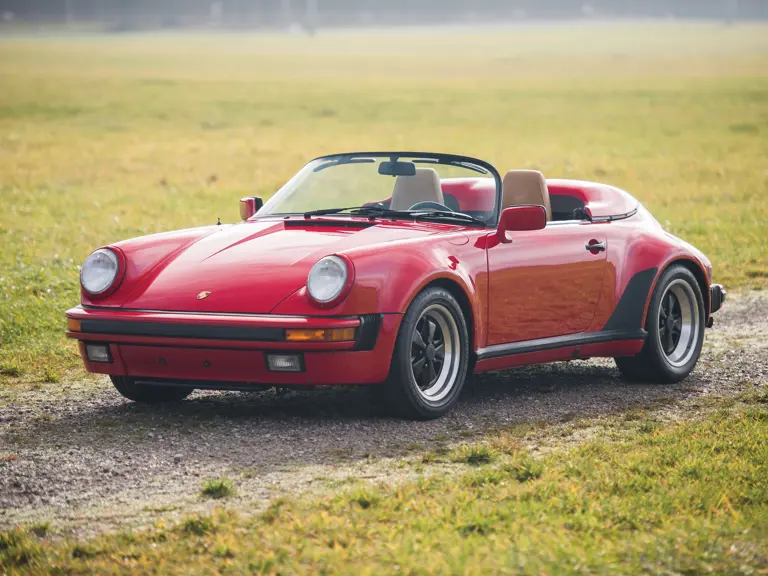
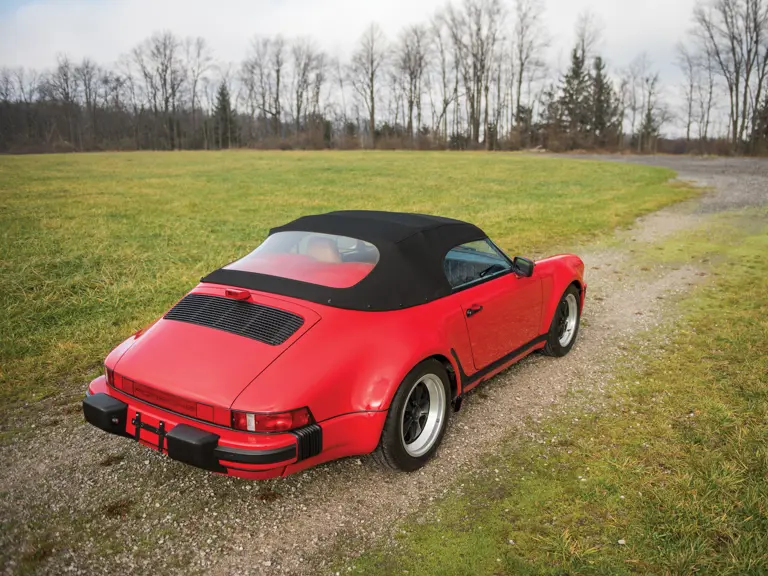
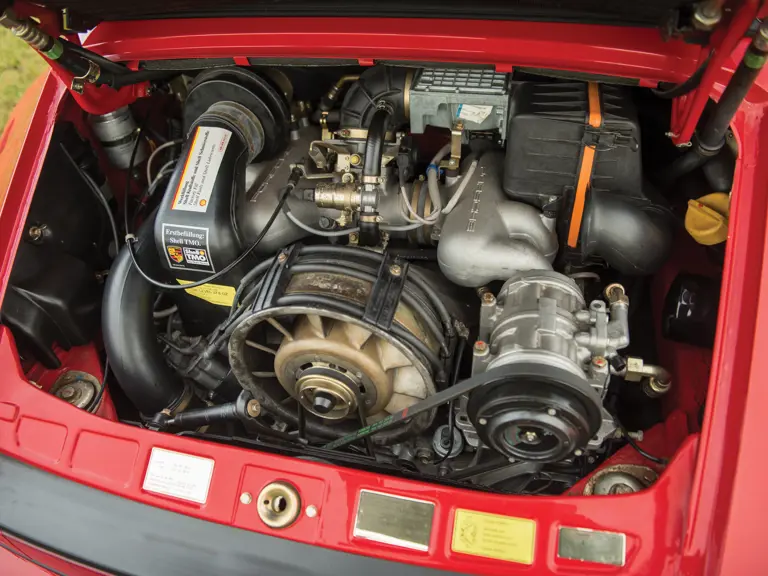


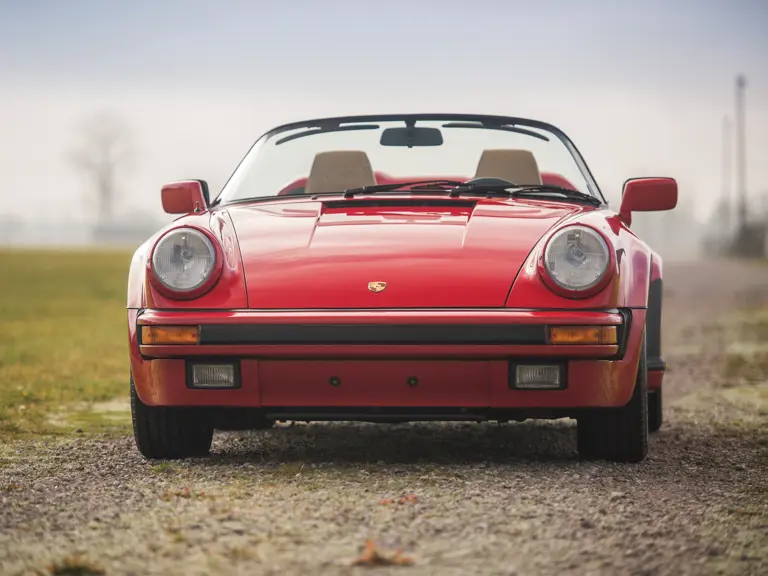

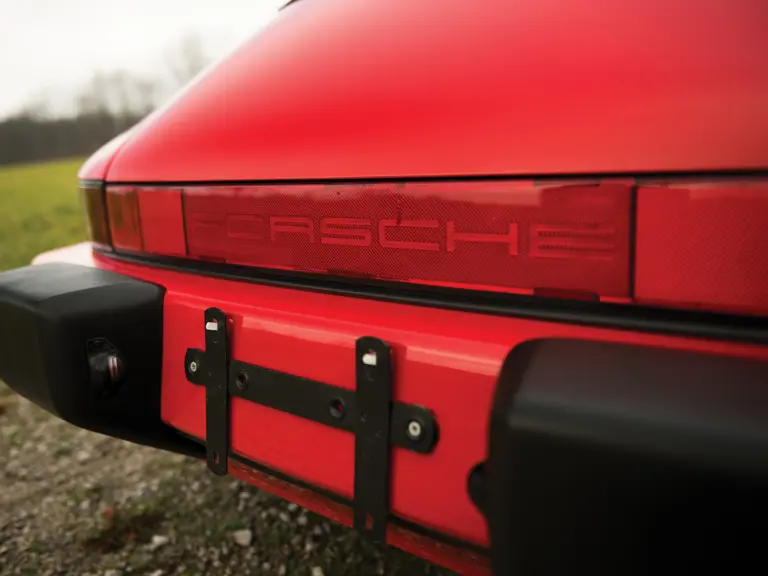
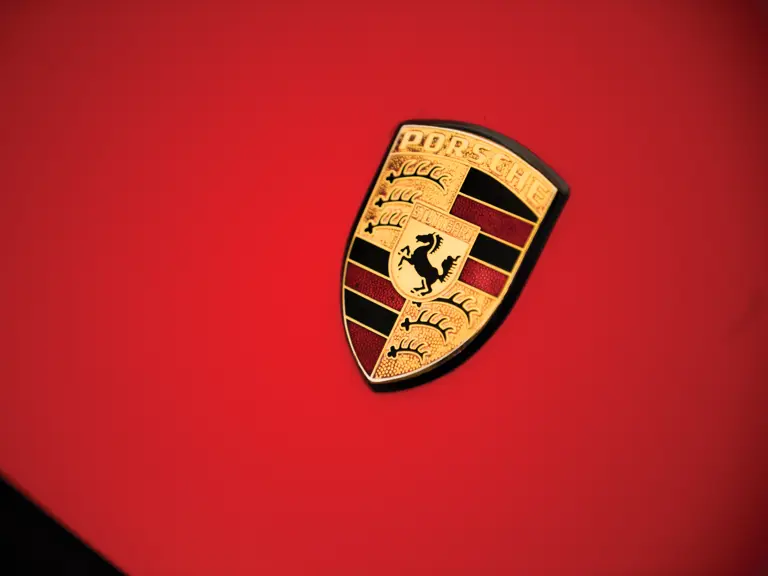




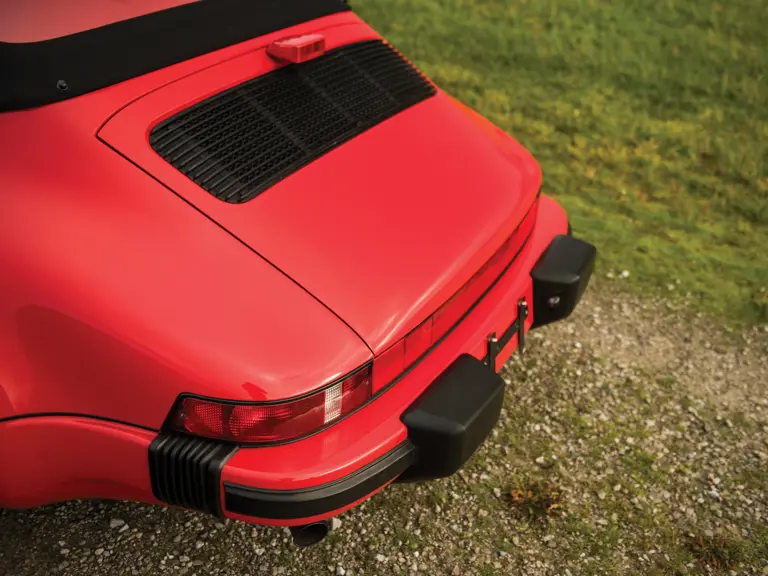
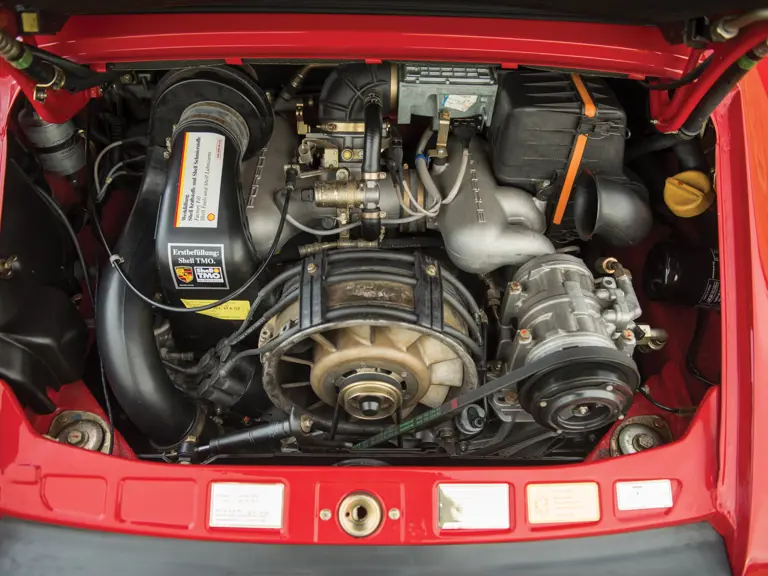

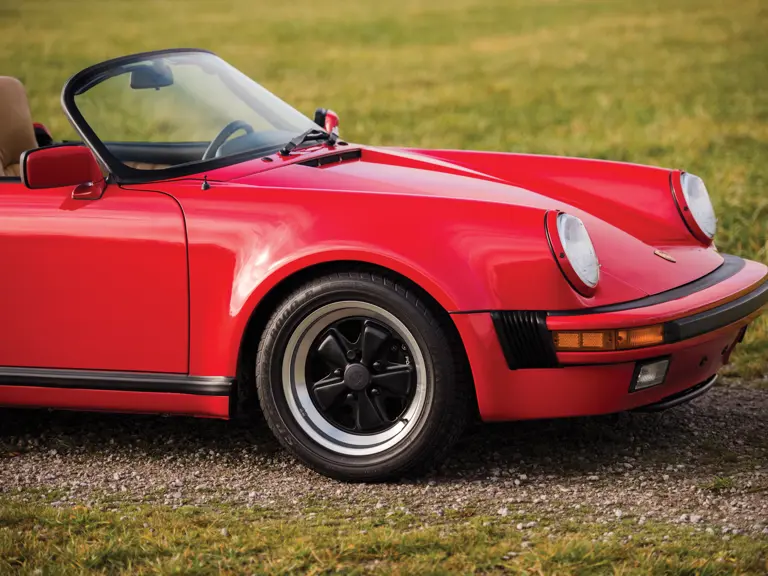

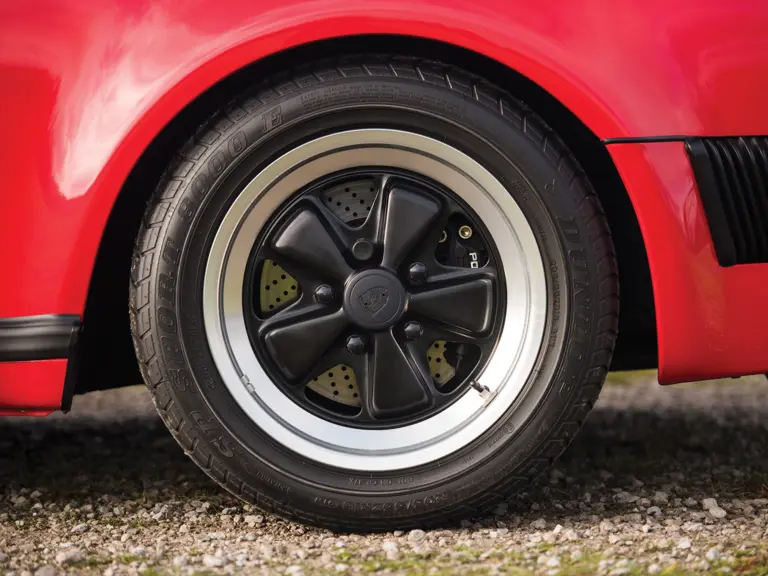
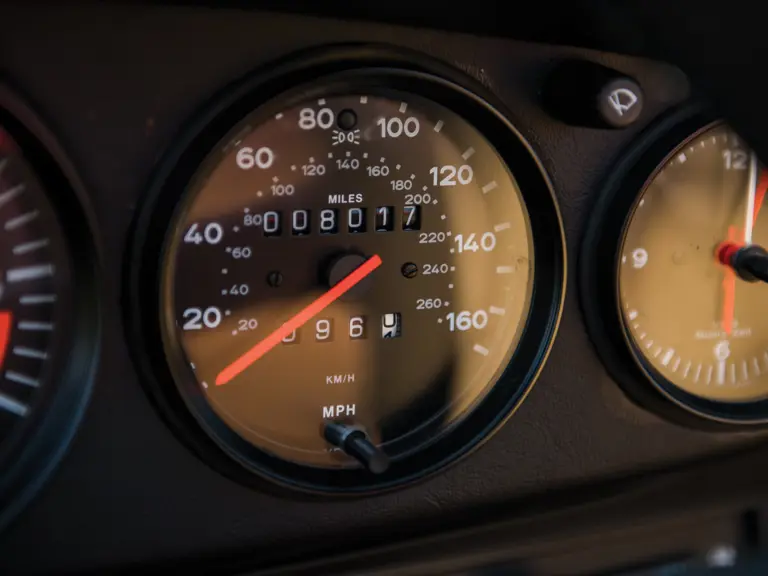
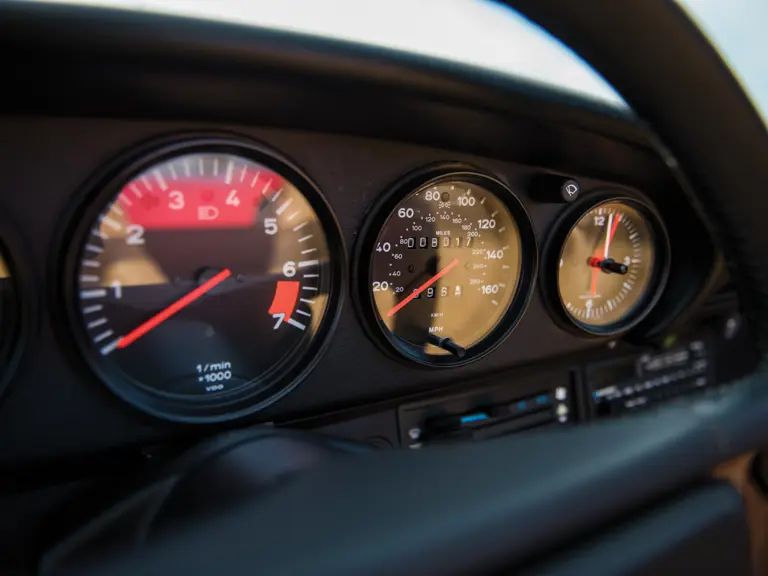
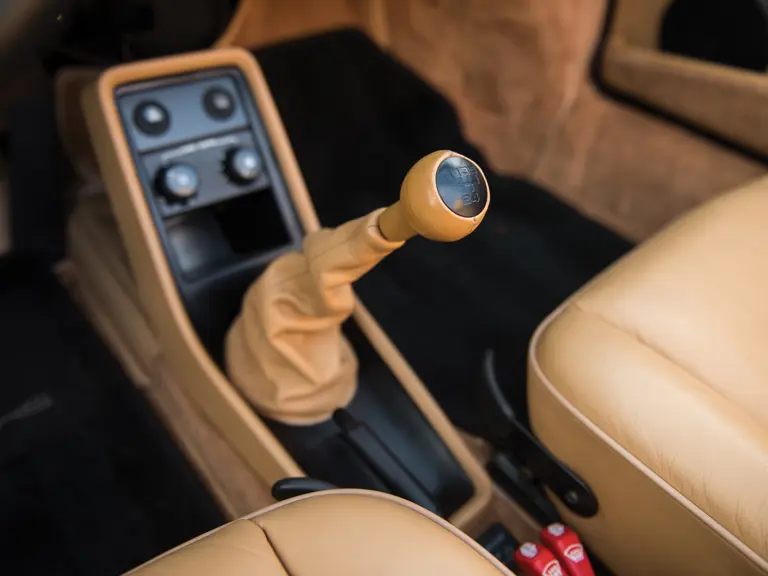
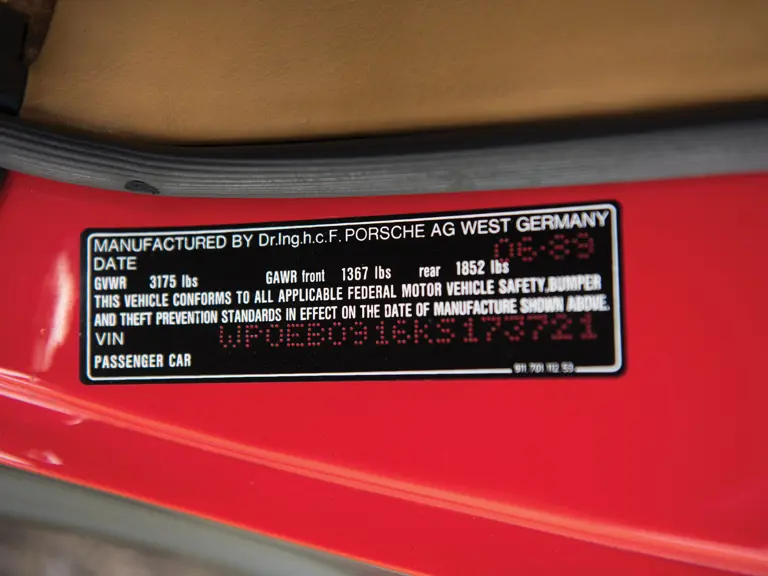
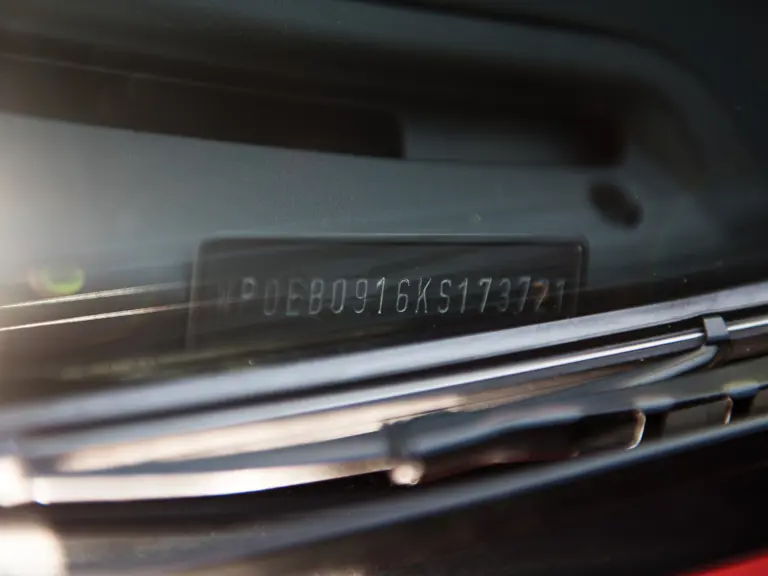
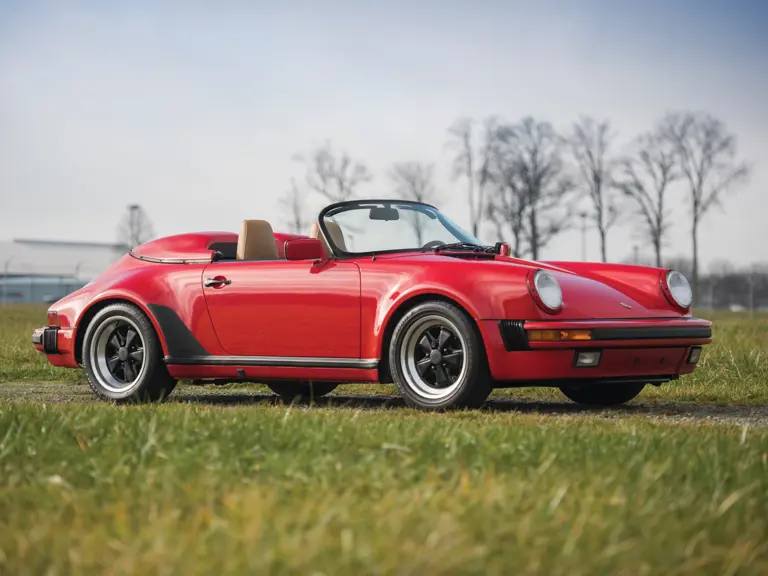
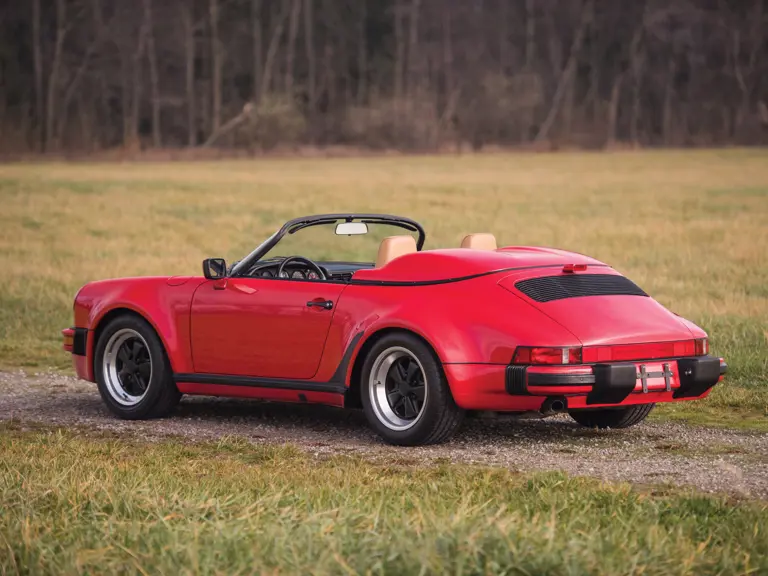
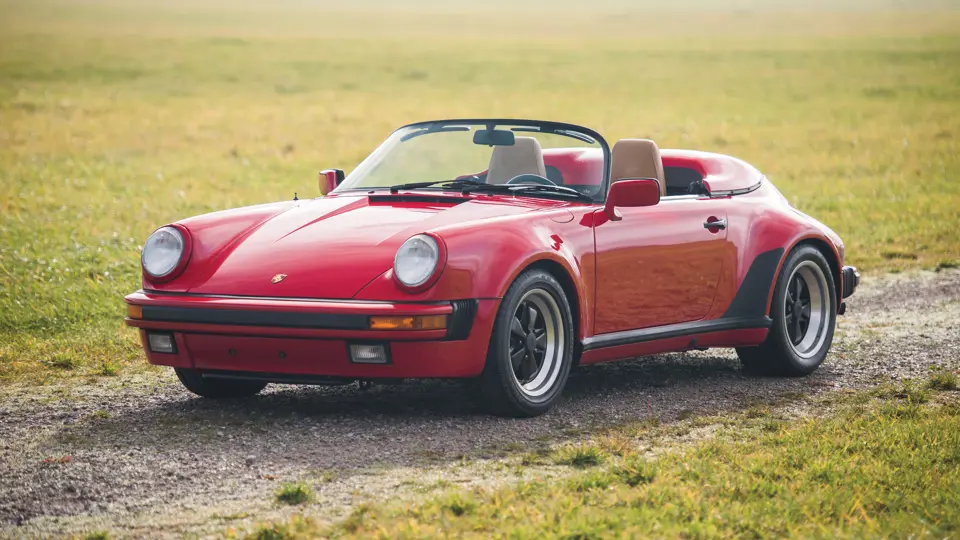
 | Amelia Island, Florida
| Amelia Island, Florida

